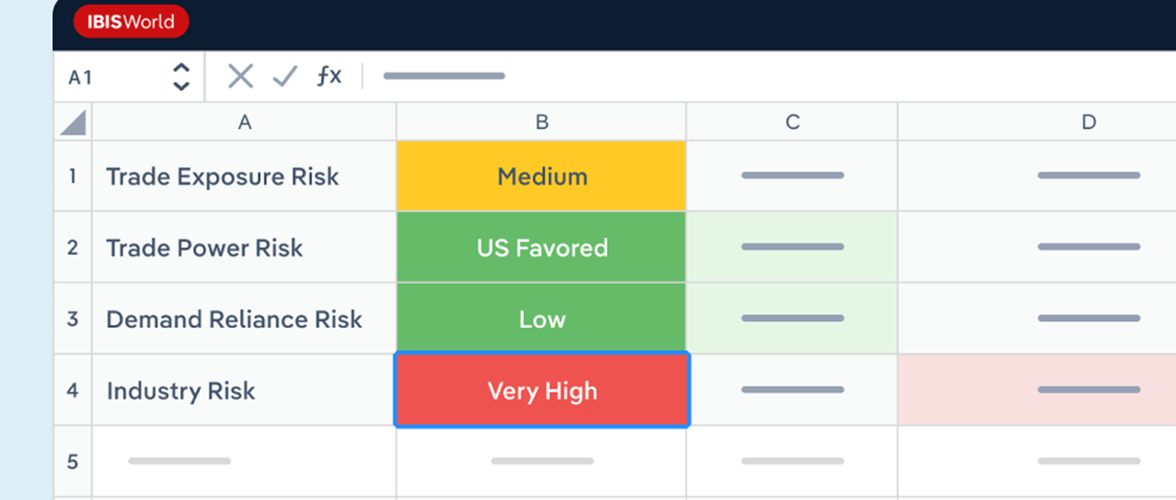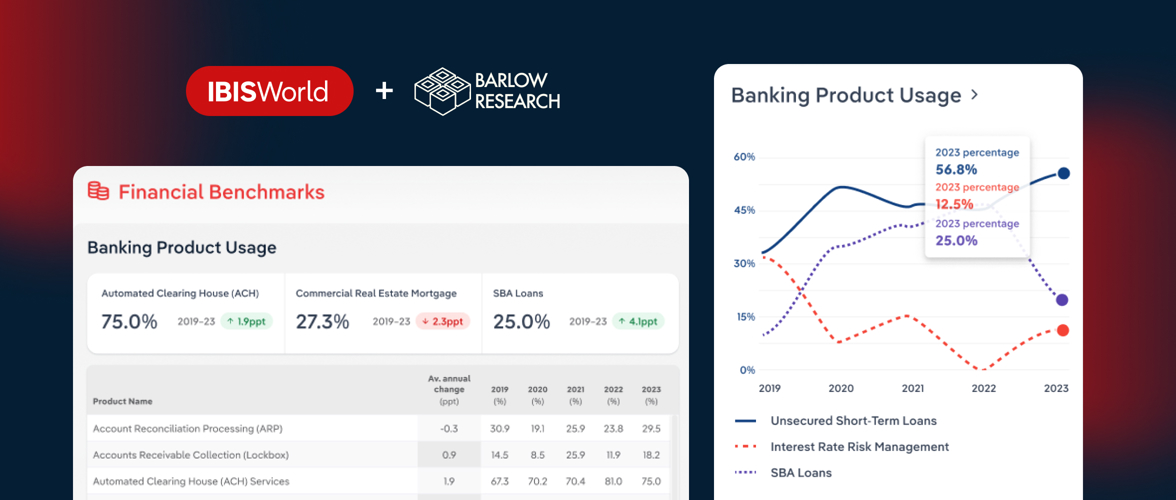Key Takeaways
- Despite a minimum requirement of a DSCR, top institutions often set requirements for small business lending.
- Small businesses are becoming more selective in their banking relationships.
- Using IBISWorld financial ratios to prescreen businesses ahead of credit analysis helps banks become more efficient.
The debt service coverage ratio (DSCR) is one of the most important factors small business bankers consider when approving a loan.
While there is no standardized minimum requirement of a DSCR for small business lending, top institutions and their bankers often set requirements to ensure they are targeting a bankable prospect, such as for the borrower to have a DSCR of 1.25x or more.
While this blanket rule may be helpful as a guideline, many industries will operate differently. For example, the DSCR will be extremely different for dentists compared with long-distance freight trucking – two of the most popular industries that use SBA assistance.
One of the biggest benefits IBISWorld hears from our banking partners is having access to more than 1,500 US industry reports that provide granular insights on their prospects and customers. Each industry report is accompanied by more than 70 financial ratios, including DSCR info, and the ability to filter by customer asset size.

Benchmarking financial performance is not a new trend within banking, but with more data available it is becoming easier to use than ever before.
Using financial ratios to prescreen businesses ahead of a thorough credit analysis helps banks become more efficient. In addition to the industry financial insights, every IBISWorld report includes industry questions, key trends, forecast growth rates, and more.
For example, Segment Benchmarking can be used for performance and productivity benchmarks based on the size of business, or use State Industry Reports for insight into local industry performance.
This information has become increasingly valuable to small business bankers as portfolios have grown in recent years. A significant portion of this growth is a result of bankers’ long work hours completing and verifying each small business’ PPP applications.
Converting small businesses into long-term customers is the current challenge for banks. Small businesses are becoming more selective in their banking relationships since demonstrating your knowledge of a customer’s industry to secure long-term relationships has become more and more important.
These small businesses do not have the same access to centers of influence as their middle-market and corporate competitors, so these IBISWorld’s insights offer a resource to help your customers shape their path to success.









